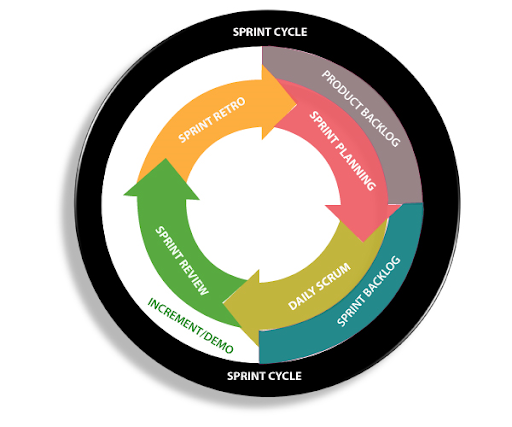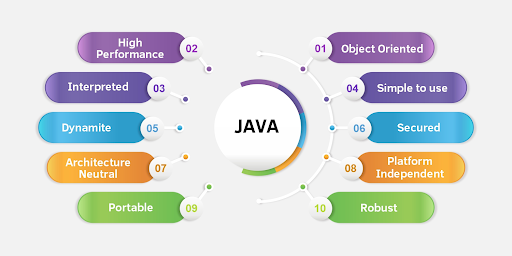Businesses need to consider various factors while building a new application, and one of the key elements is the kind of Java development methodology to choose which will be apt for the project.
You need to hire java developers who are experienced, can keep the build on track, and can work with the right tools. Java is indubitably the best technology to work with but the question arises which Java methodology model to choose? What makes this question even more complicated is that there are several different methods to choose from.
Here we have listed some of the best Java methodologies that can help you choose the Java software development services you need. Choosing the right method can affect the whole development process and the outcome of your speculations.
- Java is the authorized programming language of Android, the operating system that runs on 73% of all smartphones worldwide.
- Java works on 97% of enterprise desktops.
- More than 222,700 companies worldwide use Java, including nearly 91,000 in the United States.
- 52% of Java applications are web services.
- Java is widely chosen across the globe in financial software and application development because of its built-in security features.
- 44% of Java developers create financial software using the language.
What is a Java development methodology?
Java methodologies are important in creating the program because they help ensure that customer requirements are met by the design team. Think about every app you use in your multipurpose or workspace. This app went through a series of plan development and testing stages. Each methodology package is packed with additional features and practical ideas to help manage application production and includes specific “methods” to help you meet project deadlines.
Carefully plan and evaluate the strengths and weaknesses of each methodology. Java development methodologies are based on your specific needs and are important in software development because they help the development team meet customer requirements.
Advantages of using various Java development methodologies
Some of the biggest benefits of using java are:
- Java is well-equipped with the ability and power to forecast better estimates
- Java delivers stable and everlasting applications
- This language enhances client developer communication
- It makes it easier for developers to clarify and delegate the task to team members
- It identifies, analyses, and corrects any kinds of errors or pitfalls, early on in the developmental stage
- Java increases the chances of delivering exactly what the business needs or client envisions
Here are the top-ranking Java development methodologies for your business
Waterfall development methods
The waterfall development method is a traditional method used by businesses to successfully develop Java software. It ensures that all development tasks are fully completed by giving teams a sequential development cycle where software production flows downward like a waterfall.
As a linear development model, it is very easy to understand the method, with every phase of the project tested, reviewed, and delivered before moving on to the next. Waterfall works well with even smaller applications, helping you with project management tasks, and can be effective in completing projects quickly. A disadvantage is that during development you want to know if your build was successful, but not being able to verify it before the end of a project can lead to long delays as your developers fix bugs and issues.
Another disadvantage is that all the requirements should be known in advance because the methodology leaves no room for maneuver. After the application has moved on to the test phase, you are determined to use the code you have already put together to create an application, so no modifications can be made post this stage.
Extreme programming
This model works in highly volatile environments and works best when you want to reduce development costs without compromising quality. Not all projects can be of high quality so avoid hiring inexperienced developers, even if you intend to save money!
Even extreme programming has limitations to the number of changes developers can make to an application. Too much tweaking can delay the project and can overwhelm developers.
Iterative development methodology
Much easier to manage and maintain as compared to the Waterfall methodology, this might be the perfect alternative. By breaking down large development projects into smaller, more manageable pieces, the code is developed and tested in repetitive cycles to ensure that all functions work correctly.
An advantage of using this development methodology is that additional functionality can be developed and integrated until the software is ready to be deployed. Iterative development methodology ensures that each phase of software development is delineated and coding does not begin until the design is fully approved. It offers more flexibility, giving your business the best of both worlds.
Agile development methods
Agile is a disciplined process that has exploded in popularity in recent years, allowing for code changes and changes in development direction during the build and deployment of an application. It is the most commonly used method in software development, surpassing the more traditional waterfall method. It is a highly structured type of development that privileges the development process over processes and tools.
The Agile methodology makes it easy to implement any change requested by the customer before testing an application. Another advantage is that after all coding and testing are completed, a working product is delivered, while the waterfall methodology requires additional documentation before any software is released.
Cascade methodology
This technique is another common strategy used by most organizations and associations when they need to promote Java programming. The cascade model is known for its simplicity and straightforward development path. Coding, testing, auditing, and delivery are attempted individually in that same request. The business does not proceed to the next phase until the last phase is completed.
Java application development company that has a reasonable goal makes the most of the cascade development model. Once the product enters the testing phase, no more changes can be made.
Spiral Programming Development Model
This model is for customers who prefer to play it safe. Indeed, the spiral model takes testing seriously. Testing allows developers to find and fix bugs before they become a threat. Companies that prefer to fix bugs before users encounter them could benefit from the Spiral Programming Development Model.
Scrum Methodology
Scrum is built on a powerful concept that allows teams to divide coding and test applications into biweekly or monthly iterations called sprints and track progress through ongoing stand-up meetings. When a team uses the Scrum approach, the roles and responsibilities of the team do not change during development, removing unpredictability and enhancing the continuous delivery of all elements of the software application.

Scrum Master
As liaisons for the Product Owner and the software development team, Scrum Masters work to mitigate any obstacles developers encounter when putting an application together.
They are also responsible for bringing new features to the product owner and pointing out necessary changes and new things that end-users want to introduce into the application in the next sprint. If your Scrum is working well, your development team should be self-sufficient.
Huge explosion methodology
The huge explosion technique comes into use when customers don’t have an unmistakable image as their primary concern for the result. For example, you can hire java developers who can implement programming that matches the customer’s wishes. Complicated or large projects cannot be promoted in this way. Another disadvantage is that if the result is not what the customer wants, the technicians have to start over!
Kanban methodology
Kanban, a lean and agile methodology, is a popular Java method, offering less structure than Scrum. It revolves around code changes through small changes that can be incorporated at any time during development. By organizing work on a Kanban board, developers can list their workload in sections based on where they are in the development cycle. Most companies have a list devoted solely to coding, testing, and debugging, where all activities are organized and verified upon completion.
Kanban is the least disruptive and differs from other agile methods in that there are no predefined roles and it focuses on continuous delivery. It provides developers with a quicker method of delivering a project and permits them to balance task demands when there are several software changes.
Other Java Development Methods
- Rapid Application Development (RAD) – RAD offers a fast and accurate development methodology and is designed to deliver higher quality results by speeding up the entire process. RAD helps mitigate potential risks as the end-user will quickly review the code and application to make sure it meets their requirements. RAD may not be suitable for many companies due to the high cost of modeling and automated code generation.
- Prototype model – If your team completes an application prototype before the big coding phase begins, it ensures that all project needs are met. Creating this prototype allows the end-user to preview the finished product and then change the appearance if they are not satisfied with the initial result.
Conclusion
With so many methods, it looks like several of them will meet your needs. While this may be true, choosing the right methodology is essential for successful application. To choose a Java methodology, you need to decide which part of the process you want to focus on the most. Then judge whether the method meets your needs or not. That way, you’re on the right track to finding the right approach for your software development.
However, if you can’t decide, you can always hire a java developer who is an expert in the field and can help you choose the right methodology. Whether you are a start-up or a large company, you need to find the one that exactly suits your needs. You need a framework in place to keep your development process running smoothly.
Also Read: How to make Web App with java Script


